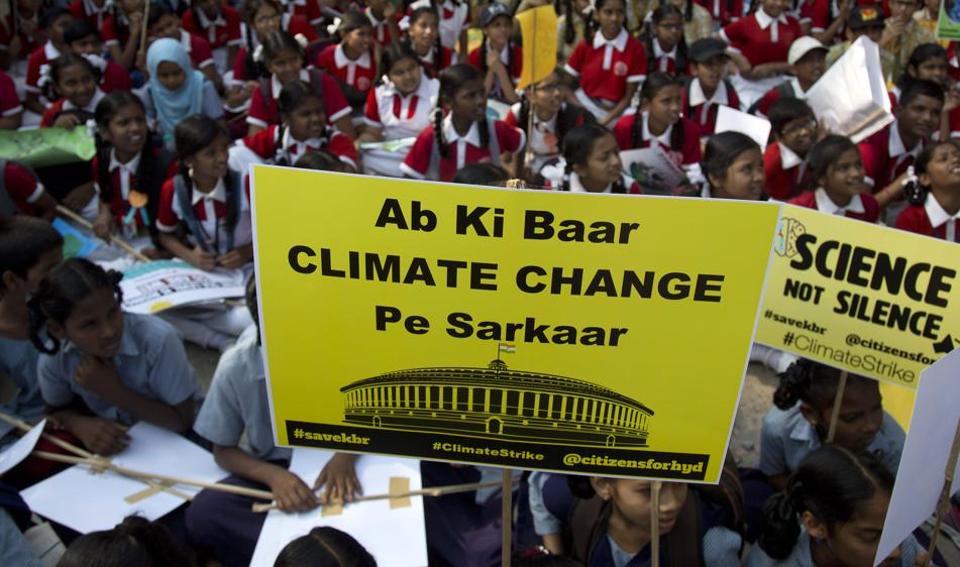Relevant for General Studies & Essay
Mainstreaming can be incentivised from both bottom-up as well as top-down. The Centre can play a stronger role in creating institutions that can support sectoral and state-Centre collaborations and finance the integration of climate change into the daily functioning of states and sectors

- More than five years ago, an unprecedented deluge, estimated to have been over 440% above normal, caused massive devastation in Uttarakhand. These rains led to glacial lakes bursting, resulting in flash floods and landslides. The government’s estimate of human loss was 800 but this may be too conservative; other estimates pegged human casualties at 6,000, along with 9,200 livestock loss (affecting livelihoods), and 3,320 houses and property damaged in the floods.
- At first glance, the culprit seems to be the heavy rainfall but experts agree that the magnitude of the disaster increased manifold because of illegal construction along the floodplains and burgeoning hydropower infrastructure. Although Uttarakhand is known to be a disaster-prone state, it was not prepared for this scale of event.
- These types of weather anomalies seem to have become more frequent and extreme in recent times. In 2016, many southern states faced the worst drought in 40 years. In 2017, almost half of India, including the food bowl states of Punjab, Haryana, Maharashtra and Madhya Pradesh, faced drought-like conditions. More recently, the effects of excess rain were evident in the flooding in Kerala in 2018.
- In response to these extreme weather events, states have now begun incorporating climate impacts into their budgets, programmes and policies. This integration of climate information into policies, programmes, and plans is known as “mainstreaming”. It has several co-benefits, including protecting important development gains from being undermined by climate change and ensuring that future development succeeds despite climate change impacts.
- Some states and ministries have been leading the way in integrating climate considerations into their daily functioning. In 2013, Madhya Pradesh (MP) published its first State Action Plan for Climate Change (SAPCC) with the theme Integrating Concerns – Converging Possibilities. The process of developing this SAPCC was highly collaborative; it created sectoral and interdepartmental working groups and engaged a range of stakeholders. One of the by-products of this process was that the Department of Animal Husbandry became increasingly aware of the impacts of extreme heat on the livestock and the milk supply of the state. Since 2010, the department had been witnessing a decrease in milk production; the SAPCC process linked them with experts that established the connection between this decrease in production and increasing temperatures.
- They began phasing out the existing stock of exotic cow species, which had formed the bulk of the livestock in MP because they tend to provide higher milk yields, and replacing them with indigenous species which generally produce lower yields than imported species but continue to produce yield even in high temperatures.They also developed and invested in climate-resilient breeding programmes, improving fodder quality and availability, and research and training on breed improvement and disease identification.
- The floods were also a wake-up call for Uttarakhand, and in 2014, the state developed its SAPCC entitled Transforming Crisis Into Opportunity. The forest department partnered with others to pilot an initiative focusing on increasing the climate resilience of forest-dependent communities. The project increased water storage and access for communities and helped diversify their crops and cropping methods. It also initiated efforts to regenerate forests, including interventions such as increasing forest cover density and soil control measures.
- However, the scale at which such efforts are occurring is too small. There are means by which states and sectors can better incorporate climate considerations into their work more quickly. These include using existing funding streams to intentionally support adaptation, as the department of animal husbandry did in MP, and building capacity and institutional memory to enable implementation and sustained action, as the forest department in Uttarakhand did by involving gram panchayats and van panchayats at all stages of the project.
- Although states have been leading efforts on mainstreaming, state governments and sectoral ministries need to be better prepared for these events. They have an opportunity to better integrate adaptation rapidly and at scale through the revisions of the SAPCCs that are currently underway. The MP and Uttarakhand examples showcase the importance of the SAPCCs in terms of both the process as well as the final plans in facilitating mainstreaming. However, mainstreaming can be incentivised from both bottom-up as well as top-down. The Centre can play a stronger role in encouraging sectors to collaborate to contend with climate impacts, create institutions that can support sectoral and state-Centre collaborations, and provide financing for efforts to integrate climate change into the daily functioning of states and sectors.

